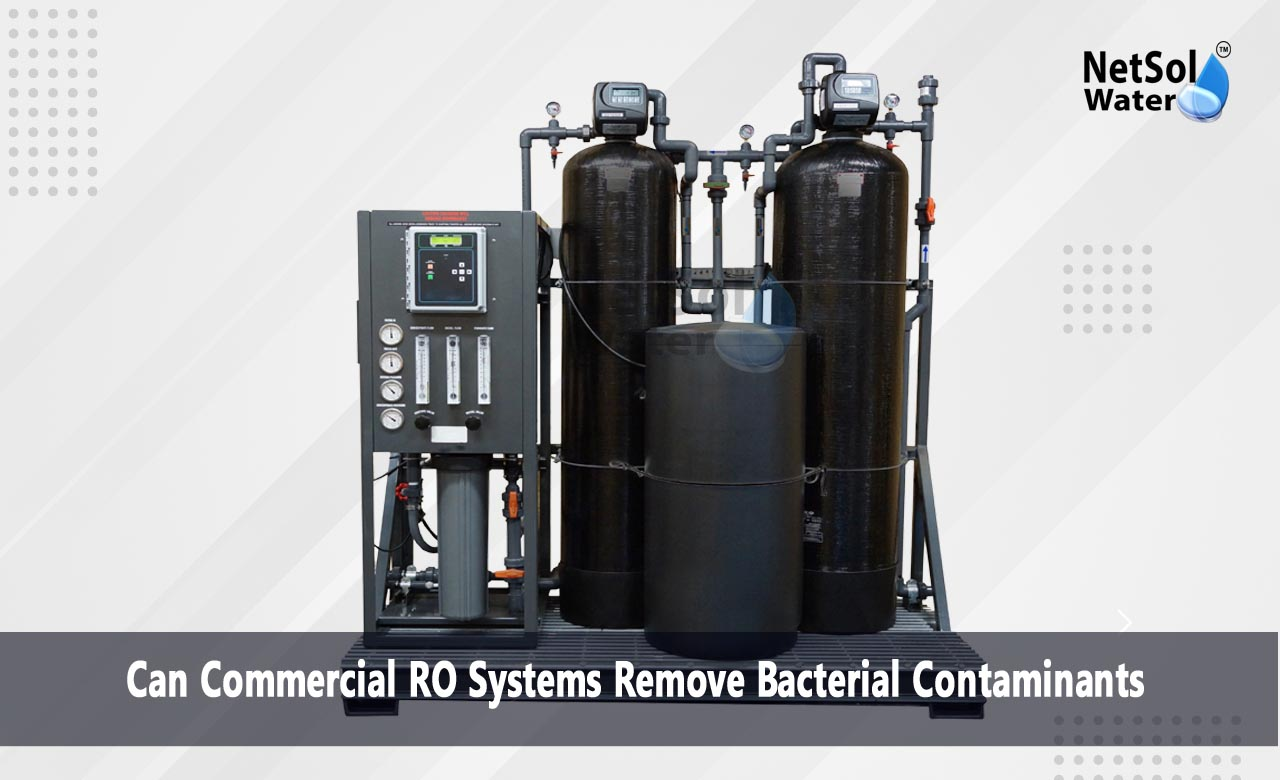Can Commercial RO Systems Remove Bacterial Contaminants?
Water is perhaps the most essential asset for any enterprise. For industries such as food processing, healthcare, hospitality, or pharmaceuticals, water quality becomes all the more significant. Harmful bacteria in water are probably one of the greatest worries in water safety. This leads to a pertinent question — do Commercial RO plants remove bacterial contaminants?
We will explain how commercial RO plants function, if they can kill bacteria, and what other actions can be taken to make the water even safer.
Learning about RO Plants and Bacteria
Reverse Osmosis or RO is a method of removal of dissolved salts, impurities, and other particles from water by the use of a unique membrane. The membrane contains minute pores that let only clean water through but not large molecules and contaminants.
But in the case of bacteria, things require a little more care. Bacteria are tiny living things, but RO membranes tend to be made to filter out even tinier particles. So, can Commercial RO plants remove bacterial contaminants? The reply is largely yes — but there are some exceptions.
How Commercial RO Plants Filter out Bacterial Contaminants?
Here's how commercial RO plants assist in filtering out bacteria:
Tight Membrane Pores
RO membranes are extremely small pores, typically measuring around 0.0001 microns. Most bacteria are too large to fit through this and be allowed passage. This means that the RO membrane is extremely good at preventing many forms of bacteria.
Pre-Treatment Filters
Prior to water passing through the RO membrane, it typically goes through a number of filters. Some of these are sand filters, carbon filters, and micron filters. These take out larger particles, chlorine, and even certain bacteria, lessening the burden on the RO membrane.
Post-Treatment Options
Some treatment systems post-RO also have ultraviolet (UV) lamps or other forms of disinfection. UV light will kill any bacteria that are left, adding an added protective layer.
Therefore, though Commercial RO plants eliminate bacterial impurities, effectiveness rests with the maintenance of the system as a whole and protection through other means.
Limitations to Be Aware Of
While RO membranes can screen out bacteria, there are a few pitfalls to keep in mind:
Biofouling: Bacteria may develop on the membrane surface over time. This can decrease the system's efficiency and even let bacteria pass through if not cleaned periodically.
Membrane Damage: If the membrane is damaged or becomes full of small holes, it may no longer be able to prevent bacteria. Maintenance and checkup are essential regularly.
Storage Contamination: Even if the water is free of bacteria after RO processing, it gets contaminated again if kept in unclean tanks or pipes.
Best Practices for Bacteria-Free Water Using RO Systems
To ensure Commercial RO plants effectively remove bacteria, you need to follow these main steps.
Maintaining the cleanliness of the RO plant is necessary. We need to regularly examine and clean the membranes, filters and storage tanks to keep bacteria away.
RO in drinking water: Following the installation of the RO plant, it is advised to add a UV disinfection unit. The system will be able to wipe out any bacteria that managed to find their way into the water after it was treated.
Water Quality Monitoring: Daily water quality checks which focus on microbial content, TDS and pressure in the membranes, help find problems as soon as they occur.
Correct Storage and Piping: Always clean and disinfect the water storage containers and the pipes in your house or building. Poorly maintained systems are often affected by post-RO contamination.
Why This Matters for Businesses?
Pure and bacterium-free water is not only about health but also about reputation and compliance. Companies that handle food, beverages, or healthcare need to adhere to stringent water quality regulations. Having an RO plant that eliminates bacteria ensures adherence to the standards and generates customer trust.
Also, bacterial contamination will hurt equipment, product quality, and even the law. So, making sure Commercial RO plants remove bacterial contaminantsisn'tjust good — it's essential.
Conclusion
So, can Commercial RO plants remove bacterial contaminants? Absolutely, they can — and very effectively — if properly used and maintained. The small pores of the RO membrane filter out most bacteria, and with pre-treatment and post-treatment phases such as UV disinfection, the system gets even stronger.
But routine maintenance, testing, and care are what keep protection ongoing. The right installation and a commercial RO plant can be a powerful defense against harmful bacteria and make the water safe for your business and your customers.
Do you need an advice or assistance on selecting the best water and waste water treatment unit? We have solutions for all your problems!
Let us know your problem, our experts will make sure that it goes away.
For an assistance or related query,
Call on +91-9650608473 Or write us at enquiry@netsolwater.com



